Ryu and Ken may rule their street in the fighting game genre, but monks and martial artists have become a feminine archetype in RPGs. Since the 8-bit era, at least one heroine from a high-profile, genre-important, worldwide million-seller RPG in every generation of game systems doesn’t settle for standing on her own two feet. She kicks with her own two feet, punches with her own two hands, and furthers the idea that in the RPG universe, every lady with working arms and legs should do the same. Forget Beauty and the Beast. From medieval tomboy princesses to prehistoric hut dwellers to modern girls living in dystopias, Beauty is the Beast and her killer instincts are a tale as old as time.
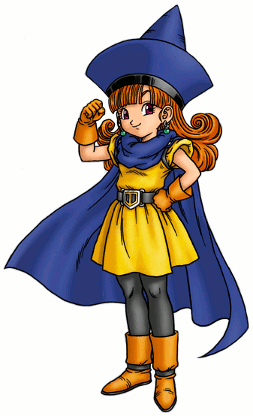
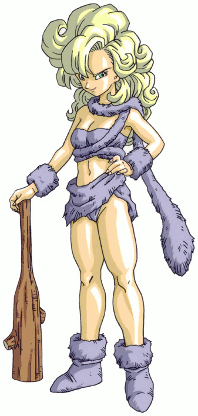

Alt/title text available to those who hover.
Although Princess Alena, Ayla, and Tifa Lockhart won the championship belts of Dragon Quest, Chrono Trigger, Final Fantasy, and Kingdom Hearts, RPG girls weren’t content with taking down the biggest guns. They wanted it all. Nei from Phantasy Star II beat even Alena to the punch-and-claw at tearing her opponents a new one, and Rika followed in her footsteps for Phantasy Star IV. Sarah and Karna started the first half of their Shining Force II life as dedicated healers in the priest class, got sick of it, and shed their clerical robes to start kicking faces in as master monks. Now if only Sarah could have kicked Princess LastMinute out of the picture and gotten her way in the ending—but more on that some other time. Fellow SFII star Sheela starts as a master monk. Secret of Mana‘s Purim begins the game equipped with knuckles and looks great flinging Chobin Hoods around by their heads. (Unfortunately, there’s little viability to her using that weapon forever since a developer oversight led to gloves only being able to reach their eighth upgrade with lucky grinding in the final dungeon.)
I can name male fist fighters from RPGs without consulting a search engine too, like Yang, Sabin, Zell, and Amarant from the Final Fantasy series, Carver from Dragon Quest VI, or Senel from Tales of Legendia, but female fighters come to mind more often and across a larger number of franchises. Aside from the eight girls mentioned, we have Farah (Tales of Eternia), Rena (Star Ocean: The Second Story), Princess Kumatora (Mother 3), Chie (Persona 4), Cecille (Arc Rise Fantasia), and Sophie (Tales of Graces). I recall a fighter girl in Suikoden II as well, but I forget her name. (It happens with 108 characters.)
Even RPG Maker VX Ace‘s selection of default, intentionally-generic characters serves as proof that girls have feminized the monk class and made it their own. All told, the world of RPG martial artists could only become more female-oriented if Maylene from Pokémon Diamond and Pearl stepped out of her gym and became a playable character.
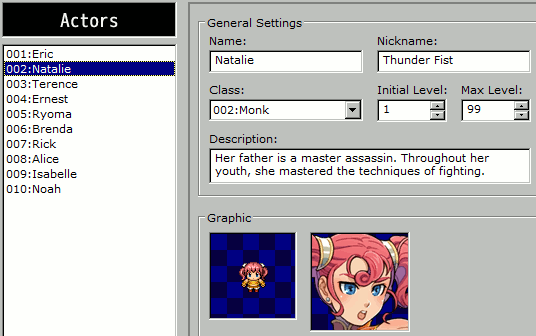
From mainstream Final Fantasy games to niche RPG Maker tools, girls rule the martial arts roost.
Why did things turn out like this, though? Does the average girl dream of being Batgirl or Chun-Li? Are developers playing to female fans’ power fantasies as they do to males? And what does this say about the rougher gender, anyway? Ragnar and Cristo can carry swords made out of metal slime kings and Alena will outperform them with a sharp earring. For as buff as Barret is, he mounted a gatling gun onto his arm while Tifa fit a glove onto her hand and deals just as much damage. Frog wields the legendary Masamune, but Ayla’s strength is all her. Is all of this a wink, a nod, and an empowering subliminal message to female gamers that guys need the crutches of weapons to make something of themselves while girls are capable, lethal, and all-around amazing on their own?
Maybe. I’ll try another theory, though. By the time video games really got rolling with the Nintendo Entertainment System, male heroes were well-established through mythology, oral legend, history, theater, and movie. Developers could easily find traditional, iconic male leads and introduce their ideas and images to the world of gaming just like directors brought novels to the big screen.
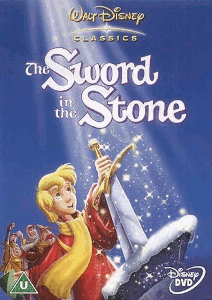
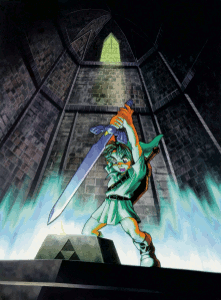
Joseph Campbell was on to something with the concept of the monomyth.
As early as The Legend of Zelda: A Link to the Past, Link pulls a sword from a stone. Randi, the hero of Secret of Mana, pulls a sword from a stone. Fire Emblem‘s Marth is heroic royalty just like King Arthur. Mega Man resembles Astro Boy. As I look back today, I see a history that plays out as I’d expect it to following the gaming crash: I see that, with few exceptions, developers were afraid of risks. Even Nintendo created Samus in the mold of Ripley from Alien; only the original Phantasy Star dared to introduce Alis in the main character role with a fairly original design and a sword as her chosen weapon.
By the mid-80s, people wanted tough female characters. Developers needed to let their girls fight, but didn’t know what they could fight with. Swords were the definitive domain of males. Guns were more viable after Princess Leia used a blaster in Star Wars, but the film icons were still James Bond and Han Solo. When character designers searched through history, they found that girls simply didn’t have weapons.
…and that was the answer. Consciously or not, developers and designers knew they needed to fill a void. Their decision: because female characters had no weapons, they would need no weapons. What makes this really special is that, unless I’ve missed something, RPGs popularized the martial artist heroine. Not novels. Not movies. With Tifa as the starring figurehead, given a big assist from her predecessors, RPGs lifted the fighter heroine to prominence. RPGs established a once-rare and now-ubiquitous archetype.
RPGs declared that martial arts are for girls.

Pingback: Ten Breeds of Memorable and Immortal 2D Sprites (part 1) | Game Design and Deconstruction
Pingback: The Creative Advantage of the Indie Game Developer | Game Design and Deconstruction
Pingback: Dreamblazers Devlog: Week of May 4, 2015 | Project Dreamblazers